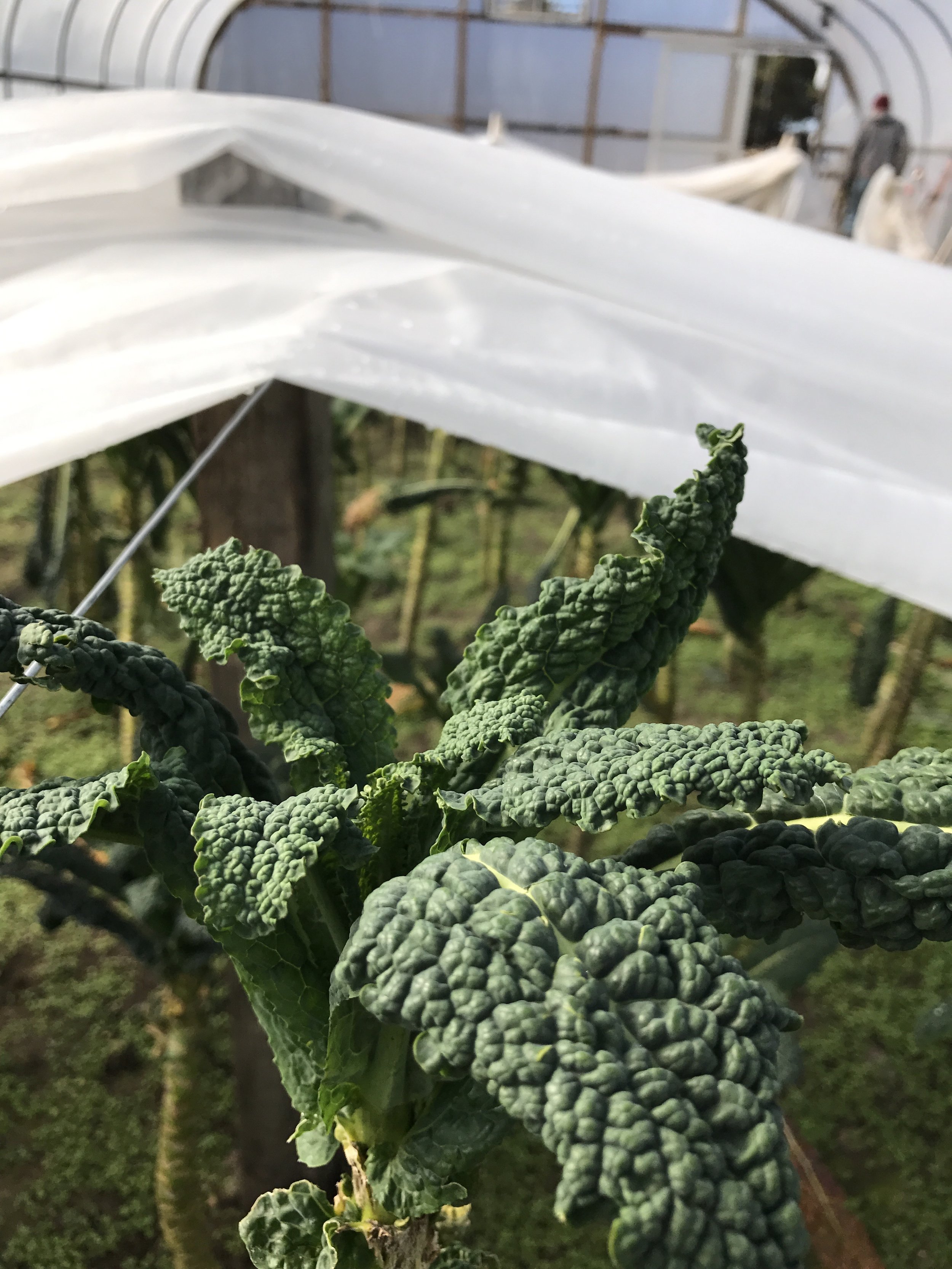Winter Production at Titus Farms: Part I
The Secondary Cover
I hope I've had the chance to talk to you about this but, I also know schedules are tight during the rush of CSA pickup or Farmers Market. So, here's a little overview of how we do what we do and how we're able to get kale on your table.
The Structure we Use
Your food is grown in a plastic and metal structure called a "hoophouse." It looks just like a greenhouse but, lacks the heating and many other bells and whistles of modern greenhouses (think MSU campus glass houses- beautiful but, $$$).
Inside that hoophouse, there is another thin layer of fabric or plastic that protects the plants and holds in the precious heat of the soil.
How do we heat it? We don't. During these last few weeks, we have put a small space heater in some houses but, overall, these crops are heated only by the sun and the residual heat that the soil holds. This time of year though, it's all about crop selection.
About the Crops
Unfortunately, this method of "passive solar production" developed by Eliot Coleman and taught to me by John Biernbaum while at MSU, only provides enough "heat" to grow certain crops that have a cold tolerance. The plants we select actually need to be able to mostly freeze and return to life. This amazing feat is often because their fleshy leaves are thick and full of SUGAR! Sugar acts as an "antifreeze" for the cells of these plants, preventing cellular destruction.
But, since we're dealing with cold, dark days, this method of production only works for leafy crops. The growing conditions are just not suitable for flowing crops, even those that tolerate cold like cabbage or broccoli. Instead, we rely upon crops such as spinach, kale, cilantro and lettuces.
Every plant has a tolerance though and it's hard to tell what's going on under the hoophouse when temperatures are super low.
Other Limitations
During certain periods of the season harvesting is also limited by temperature: the hoops have to be warm enough to allow the plants to defrost. For whatever reason, the leaves have to be attached to the plant to defrost (we can't harvest frozen leaves).
Other times, the simple growth of those super strong, cold resistant plants are limited by light. There's this lovely time referred to as The Persephone Period, in which light levels are so low, plants are basically in stasis. We need to make sure we plant before this time, if we hope to get growth (it's usually mid-November until the equinox). But, we're on the other side of the equinox now and our slow march toward spring also means a march toward longer days. This provides the growing cues that the plants need to wake up out of the funk of the Persephone days. Except now, it's really cold! So, they'll still be in stasis until soil temps in the hoop are above freezing.
The Big Picture
Much of what you'll eat is actually planted long ago, mid-September-November and tended to all winter long. Think of the hoophouse and the plants within it as living refrigerators. The plants are preserved throughout the winter but, do very little growing.
Try it at Your House!
While at MSU I did tests with mini-hoops for the home home gardener. If you're interested- ask me about it sometime!


